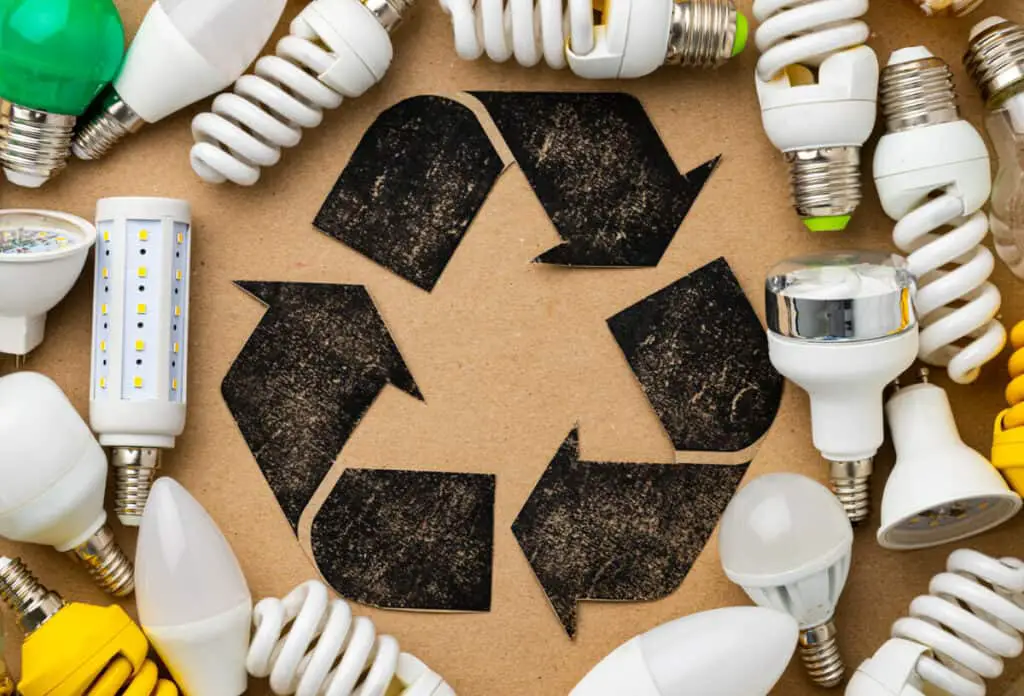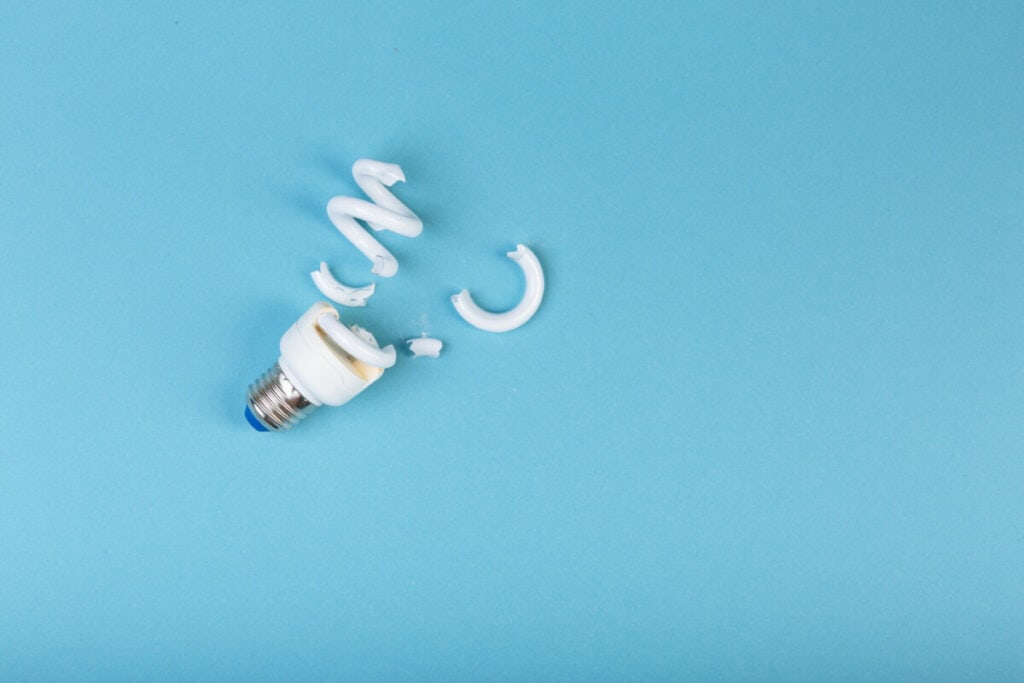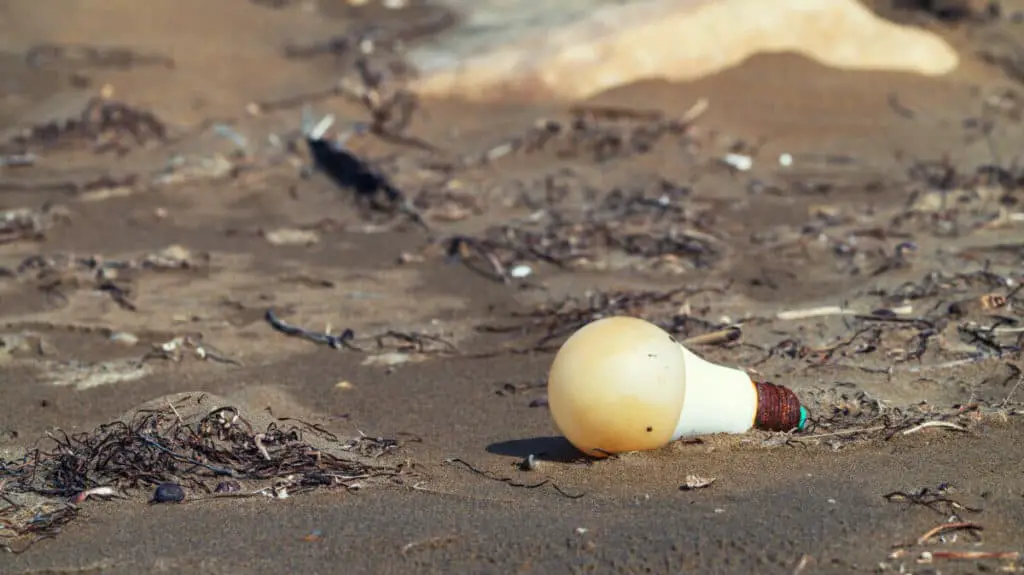
Lightbulbs are found in practically every home, and while it may be easy to change out an old lightbulb for a new one, sometimes it can be tricky to know what to do with the old lightbulb. Since lightbulbs can contain harmful materials, it is important to dispose of them safely.
Recycling procedures vary depending on the type of lightbulb. Local hardware stores often accept used, in-tact lightbulbs; otherwise, information about regional recycling facilities can be found online. Here are ten helpful tips about safely recycling your used lightbulbs, as well as facts you should know beforehand:
1.) CFLs Can Contain Mercury
CFLs, or compact fluorescent lamps, are the modern alternative to incandescent lighting. CFLs are more energy-efficient, durable, and compact, so it is understandable that many homeowners view them as a worthwhile utility investment for sustainable home lighting. They are also easier to control, in terms of temperature, which is why they are often used in places like hospitals, stores, and airports.
The CFL design involves a spiral, glass tube on the inside of an outer glass chamber. The compact, glass spiral is called a ballast; the ballast contains mercury vapor and is coated in phosphor powder. When mercury vapor reacts to gases, the chemical reaction produces UV light, which cannot be seen by the human eye. When the UV light illuminates the phosphor powder in the ballast, it becomes visible, and the result is a brilliant “fluorescent” source of light.
Using mercury in this ingenious way allows homeowners and business owners alike to save exponentially on utility costs, but it also means that disposing of used CFLs can be dangerous. When the bulb is in one piece and the ballast is intact, the mercury is not harmful; however, in garbage cans, dump trucks, and landfills, it is more than likely that the lightbulb will be broken and release mercury vapor or small beads of mercury. This is dangerous to humans and the environment, so it is critical that CFLs be disposed of in proper, designated locations.
2.) Materials in Many Bulbs Can Be Reused
Recycled fluorescent lightbulbs can be reused for their glass, metals, and other materials, which means that CFLs and other kinds of lightbulbs are virtually 100% recyclable. In fact, aluminum, which is used as the material for the spiral base of more lightbulbs, requires up to 96% less energy to process from recycled materials than it does from raw materials. Similarly, glass manufacturers save significant amounts of wasteful energy when working with recycled glass materials. If not recycled, the materials in lightbulbs will take over a thousand years to decompose in a landfill, contributing to the global issue of excess waste.
3.) Certain Areas Require Recycling
Depending on the state or jurisdiction you live in, it may be illegal to dispose of lightbulbs without recycling them. California, Maine, Massachusetts, New Hampshire, Vermont, and Washington all require citizens to recycle lightbulb materials by law. Since rules and regulations are subject to change, check with waste agencies in your area to be sure about the policies that are in place and may apply to your household.
4.) Hardware Stores Offer In-Store Recycling
Retailers and hardware supply stores like Lowes, Home Depot, and Ace accept used lightbulbs for in-store recycling. Most of these locations only accept used lightbulbs that are intact, so if you have broken lightbulbs you will need to follow the US Environmental Protection Agency’s recommended steps for safe disposal.
5.) Broken CFLs Can Be Handled at Home—Carefully

Because of the mercury vapor that will be released when a CFL breaks, it can be dangerous to be around when it happens. If a CFL breaks while you are trying to unscrew or replace it, quickly get all family members and pets out of the room, make sure your HVAC system is off, and leave the room. If possible, open a window and shut the door so that any dangerous chemicals present can be aired out. Wait at least ten to fifteen minutes before returning to clean up the broken materials.
6.) Incandescent Bulbs Can Be Thrown Away
Incandescent bulbs are not worth recycling because the process is intricate and complicated. Additionally, the amount of metal and glass that incandescent bulbs contain is insufficient to outweigh the effort it would take to extract them. To safely dispose of an incandescent bulb, wrap it in paper or a garbage bag. Regardless of whether the bulb is broken, this will help protect both you and the waste worker from getting injured by potential shards of glass.
7.) Halogen Bulbs Contain Halogen Gas
Halogen bulbs, most often used in cars and utility lighting, are difficult to recycle because they contain halogen gas. Like the mercury used in CFAs, this halogen gas is an inert mixture that chemically reacts to produce light. To safely dispose of a halogen lightbulb, wrap it in paper or a bag and throw it away. If you’ve saved the packaging from the new bulb you are using to replace the old one with, you can also put the old one in the empty packaging for safe disposal. If you want to recycle the bulb, contact your local waste facilities to see if there is a nearby location that will accept them. This depends on the area in which you live, but it is certainly worth the inquiry.
8.) LED Bulbs Should Not Be Thrown Away
A common misconception is that LED bulbs are like incandescent bulbs and can be thrown away, but that is not the case. LED bulbs use tiny microchips to conduct electricity, which means they use metals that are heavy with arsenic. Arsenic is poisonous to both humans and animals, so if it is prevalent in landfills, landfill areas become hazardously toxic to those who live near and work around them. Hence, it is critical that you contact a local hardware store or research other places where you can recycle your used LEDs. The U.S. Environmental Protection Agency is a great resource and regularly updates published lists of local recycling locations.

9.) Fluorescent Light Tubes Cannot Be Thrown Away
Fluorescent light tubes are found in areas like kitchens, workshops, or restaurants where it is helpful to have diffused lighting. They are like CFLs, but much longer in shape and extremely fragile. Since they are like CFLs, light tubs contain mercury and cannot be discarded along with other roadside waste for regular pickup. To safely recycle fluorescent light tubes, follow the same research and contacting procedures for CFLs and LEDs.
10.) Mail-Back Services Are Available
Sometimes manufacturers will label lightbulbs with information regarding mail-back recycling centers. You can mail used lightbulbs to these locations and they will take care of the rest. Hold on to the original packaging, put the burnt-out lightbulbs in it when the time comes, then follow the listed procedures for sealing and mailing it to the designated facility.
Related Topics:
If you like the article above, here are some other similar articles you should check out!
